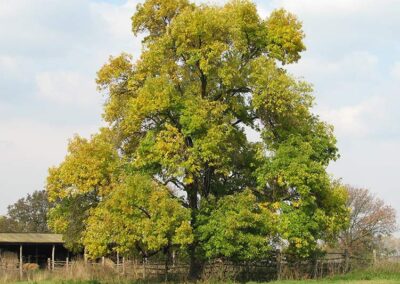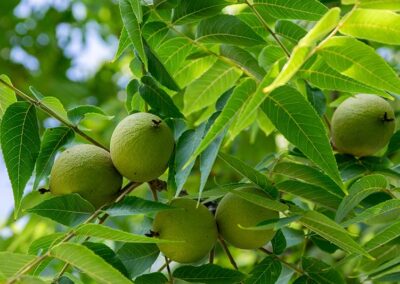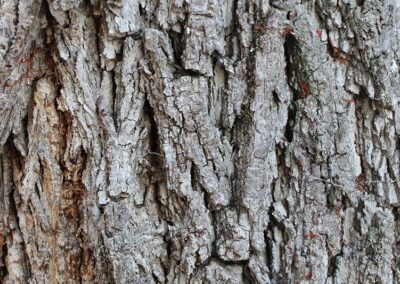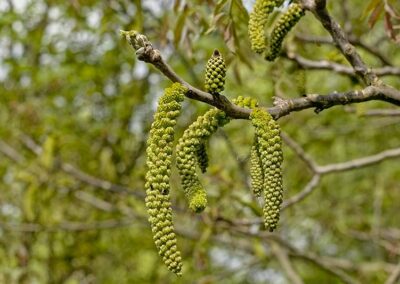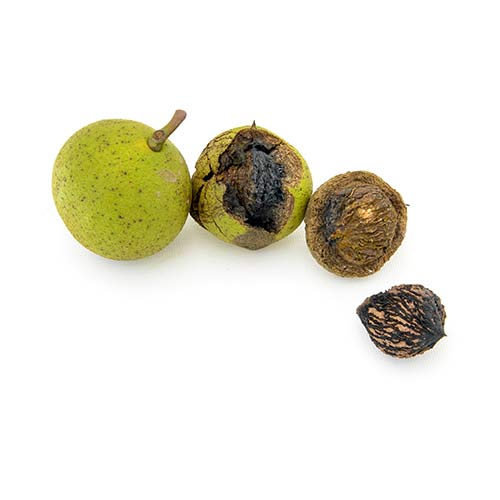
Black Walnut

Pollen Type: Tree
Cross-Reactivity: Butternut, Arizona Walnut, Hind’s California Black Walnut, English Walnut
HS Allergy Extract: Walnut, Black,Tree Mix #6, or Tree Mix #11
Family: Juglandaceae
Genus/Species: Juglans nigra
Common Names: Black Walnut, Walnut
Distribution: Central & Eastern United States.
Locations: Along streams, slopes adjacent to the floodplains, woodlands
Pollination Method: Wind-pollinated
Pollinating Period: May & Jun
Description: Black Walnut is native to North America and can grow to 100′-130′. In a forested environment, it develops a tall, upright trunk; in an open area, it produces a short trunk with a broad crown. Its bark is typically grey-black and deeply furrowed, creating a diamond-shaped pattern. The leaves are alternately arranged on the stem and generally are pinnately compound, with a 1′-2′ length. However, there is a significant variation in leaf size and shape. The Black Walnut is monoecious, with staminate (male) flowers in appearing in drooping catkins 3 1⁄4″–4″ long that grow from axillary buds on the previous year’s growth. The pistillate (female) flowers are terminal and grow in clusters of two to five on the current year’s growth. The fruit of the tree ripens during summer and autumn, forming a spherical nut with a brownish-green, semi-fleshy husk and a brown, corrugated nut. The entire fruit, including the husk, falls in October, and the seed is small and hard. The tree emits a distinctive pungent or spicy odor, which is present in most of its parts, including leaves, stems, and fruit husks.

